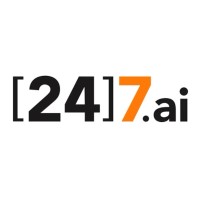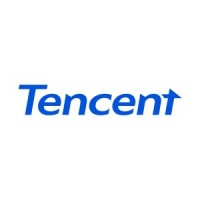
TeamViewer Company Cyber Security Posture
teamviewer.comTeamViewer is a leading global technology company that provides a connectivity platform to remotely access, control, manage, monitor, and repair devices of any kind – from laptops and mobile phones to industrial machines and robots. Although TeamViewer is free of charge for private use, it has around 640,000 subscribers and enables companies of all sizes and from all industries to digitalize their business-critical processes through seamless connectivity. Against the backdrop of global megatrends like device proliferation, automation and new work, TeamViewer proactively shapes digital transformation and continuously innovates in the fields of Augmented Reality, Internet of Things and Artificial Intelligence. Since the company’s foundation in 2005, TeamViewer’s software has been installed on more than 2.5 billion devices around the world. The company is headquartered in Goppingen, Germany, and employs more than 1,500 people globally. In 2023, TeamViewer achieved a revenue of around EUR 627 million. TeamViewer SE (TMV) is listed at Frankfurt Stock Exchange and belongs to the MDAX. Further information can be found at https://www.teamviewer.com/ . Imprint: TeamViewer Germany GmbH Bahnhofsplatz 2 73033 Göppingen Germany CEO: Oliver Steil CFO: Michael Wilkens CCO: Peter Turner CPTO: Mei Dent Registration: Ulm HRB 534075 VAT: DE245838579
TeamViewer Company Details
teamviewer
2074 employees
174354.0
511
Software Development
teamviewer.com
218
TEA_8557544
In-progress
Between 400 and 500
This score is AI-generated and less favored by cyber insurers, who prefer the TPRM score.
 TeamViewer Global Score
TeamViewer Global Score.png)

TeamViewer Company Scoring based on AI Models
| Model Name | Date | Description | Current Score Difference | Score |
|---|---|---|---|---|
| AVERAGE-Industry | 03-12-2025 | This score represents the average cybersecurity rating of companies already scanned within the same industry. It provides a benchmark to compare an individual company's security posture against its industry peers. | N/A | Between 400 and 500 |
TeamViewer Company Cyber Security News & History
| Entity | Type | Severity | Impact | Seen | Url ID | Details | View |
|---|---|---|---|---|---|---|---|
| Teamviewer | Breach | 60 | 5 | 6/2024 | TEA507070624 | Link | |
Rankiteo Explanation : Attack threatening the organization’s existenceDescription: Teamviewer suffered a cyberattack attributed to the Russian hacking group APT29. The attack occurred via an employee's credentials within their internal corporate IT environment. While the attack was contained and didn't affect the product environment or customer data, the event signifies a breach by a sophisticated threat actor. As aggressive tactics continue to threaten entities, the breach at Teamviewer raises concerns about cybersecurity preparedness and the potential implications of such incidents, even if no customer data was compromised. | |||||||
| TeamViewer | Cyber Attack | 25 | 1 | 05/2016 | TEA23220323 | Link | |
Rankiteo Explanation : Attack without any consequencesDescription: TeamViewer confirmed that it has been the victim of a cyber attack, which was thought to be of Chinese origins and utilized the Winnti backdoor. It was found that the attack was discovered before the threat group was capable of doing any damage, with experts and investigators failing to find any evidence of data being stolen during the security incident. Also, no evidence was found that the hackers were able to compromise or steal source code even though they had access to it. Seeing that the hackers were not able to steal any data during the attack. | |||||||
| Teamviewer | Cyber Attack | 60 | 3 | 6/2024 | TEA001070924 | Link | |
Rankiteo Explanation : Attack with significant impact with internal employee data leaksDescription: Teamviewer, a German cloud company, confirmed a cyberattack attributed to the Russian hacking group APT29, also known as Cozy Bear and Midnight Blizzard. The attack involved credentials of a standard employee account within Teamviewer's Corporate IT environment. Although the attack was reportedly contained within Teamviewer's internal corporate IT environment without affecting the product environment or customer data, the implications of such a breach by a sophisticated state-backed actor are concerning due to potential access to sensitive corporate information and the risk of further undisclosed exploits. | |||||||
| TeamViewer | Vulnerability | 25 | 6/2025 | TEA901062525 | Link | ||
Rankiteo Explanation : Attack without any consequences: Attack in which data is not compromisedDescription: A significant security vulnerability in the TeamViewer Remote Management solution for Windows could allow attackers with local access to delete arbitrary files with SYSTEM privileges, potentially leading to privilege escalation. The vulnerability, identified as CVE-2025-36537, was announced on June 24, 2025, and carries a CVSS score of 7.0 (High). TeamViewer has released patches and strongly recommends users update to the latest versions immediately to mitigate this risk. | |||||||
TeamViewer Company Subsidiaries

TeamViewer is a leading global technology company that provides a connectivity platform to remotely access, control, manage, monitor, and repair devices of any kind – from laptops and mobile phones to industrial machines and robots. Although TeamViewer is free of charge for private use, it has around 640,000 subscribers and enables companies of all sizes and from all industries to digitalize their business-critical processes through seamless connectivity. Against the backdrop of global megatrends like device proliferation, automation and new work, TeamViewer proactively shapes digital transformation and continuously innovates in the fields of Augmented Reality, Internet of Things and Artificial Intelligence. Since the company’s foundation in 2005, TeamViewer’s software has been installed on more than 2.5 billion devices around the world. The company is headquartered in Goppingen, Germany, and employs more than 1,500 people globally. In 2023, TeamViewer achieved a revenue of around EUR 627 million. TeamViewer SE (TMV) is listed at Frankfurt Stock Exchange and belongs to the MDAX. Further information can be found at https://www.teamviewer.com/ . Imprint: TeamViewer Germany GmbH Bahnhofsplatz 2 73033 Göppingen Germany CEO: Oliver Steil CFO: Michael Wilkens CCO: Peter Turner CPTO: Mei Dent Registration: Ulm HRB 534075 VAT: DE245838579
Access Data Using Our API

Get company history
.png)
TeamViewer Cyber Security News
TeamViewer's CISO on Thriving After Russian Cyber-Attack
In the Summer of 2024, TeamViewer was the victim of a cyber-attack by Russian APT Midnight Blizzard. At the helm of the response was Robert ...
TeamViewer Detects Security Breach in Corporate IT Environment
TeamViewer on Thursday disclosed it detected an "irregularity" in its internal corporate IT environment on June 26, 2024.
TeamViewer Patches High-Severity Vulnerability in Windows Applications
TeamViewer has released patches for a high-severity elevation of privilege vulnerability in its client and host applications for Windows.
TeamViewer’s IT network breached through compromised employee credentials
The hackers were able to copy TeamViewer employee directory data, including names, corporate contact information and encrypted employee ...
TeamViewer for Windows Vulnerability Let Attackers Escalate Privileges
TeamViewer's Remote client software for Windows has discovered a critical security vulnerability. This vulnerability could potentially allow ...
Microsoft Teams Vishing Used to Deploy Malware via TeamViewer
A vishing scam via Microsoft Teams led to attackers misusing TeamViewer to drop malware and stay hidden using simple but effective techniques.
TeamViewer fixed a vulnerability in Windows client and host applications
TeamViewer has patched a high-severity privilege escalation vulnerability affecting its Windows client and host applications.
TeamViewer Denies It Is Surprise Ransomware Infection Vector
The cybercriminals using the Surprise ransomware have chosen an unusual infection vector: the popular remote control tool TeamViewer.
CVE-2024-7479 and CVE-2024-7481 - Privilege Escalation - Vulnerability Analysis and Exploitation
CVE-2024-7479 and CVE-2024-7481 are vulnerabilities in TeamViewer's Remote Client and Remote Host products on Windows.

TeamViewer Similar Companies

[24]7.ai
[24]7.ai™ customer engagement solutions use conversational artificial intelligence to understand customer intent, enabling companies to create personalized, predictive, and effortless customer experiences across all channels; attract and retain customers; boost agent productivity and satisfaction; a

Just Eat Takeaway.com
Just Eat Takeaway.com is a leading global online delivery marketplace, connecting consumers and restaurants through our platform in 19 countries. Like a dinner table, working at JET brings our office employees and couriers together. From coding to customer service to couriers, JET is a

EduTech AI
EduTech AI is a leading provider of artificial intelligence (AI) solutions for the education sector. We are committed to helping educators and learners around the world harness the power of AI to improve teaching and learning outcomes. Our AI-powered products and services are used by schools, unive

iFood
O iFood é uma empresa brasileira de tecnologia, que aproxima clientes, restaurantes e entregadores de forma simples e prática. O iFood tem o propósito de alimentar o futuro do Brasil e do mundo, transformando a sociedade por meio da educação e da tecnologia, da segurança alimentar, da inclusão e co

Tencent
Tencent is a world-leading internet and technology company that develops innovative products and services to improve the quality of life of people around the world. Founded in 1998 with its headquarters in Shenzhen, China, Tencent's guiding principle is to use technology for good. Our communication

Agoda
At Agoda, we bridge the world through travel. We aim to make it easy and rewarding for more travelers to explore and experience the amazing world we live in. We do so by enabling more people to see the world for less – with our best-value deals across our 4,700,000+ hotels and holiday properties, 13

Frequently Asked Questions (FAQ) on Cybersecurity Incidents
TeamViewer CyberSecurity History Information
Total Incidents: According to Rankiteo, TeamViewer has faced 4 incidents in the past.
Incident Types: The types of cybersecurity incidents that have occurred include ['Breach', 'Cyber Attack', 'Vulnerability'].
Total Financial Loss: The total financial loss from these incidents is estimated to be {total_financial_loss}.
Cybersecurity Posture: The company's overall cybersecurity posture is described as TeamViewer is a leading global technology company that provides a connectivity platform to remotely access, control, manage, monitor, and repair devices of any kind – from laptops and mobile phones to industrial machines and robots. Although TeamViewer is free of charge for private use, it has around 640,000 subscribers and enables companies of all sizes and from all industries to digitalize their business-critical processes through seamless connectivity. Against the backdrop of global megatrends like device proliferation, automation and new work, TeamViewer proactively shapes digital transformation and continuously innovates in the fields of Augmented Reality, Internet of Things and Artificial Intelligence. Since the company’s foundation in 2005, TeamViewer’s software has been installed on more than 2.5 billion devices around the world. The company is headquartered in Goppingen, Germany, and employs more than 1,500 people globally. In 2023, TeamViewer achieved a revenue of around EUR 627 million. TeamViewer SE (TMV) is listed at Frankfurt Stock Exchange and belongs to the MDAX. Further information can be found at https://www.teamviewer.com/ . Imprint: TeamViewer Germany GmbH Bahnhofsplatz 2 73033 Göppingen Germany CEO: Oliver Steil CFO: Michael Wilkens CCO: Peter Turner CPTO: Mei Dent Registration: Ulm HRB 534075 VAT: DE245838579.
Detection and Response: The company detects and responds to cybersecurity incidents through {description_of_detection_and_response_process}.
Incident Details
Incident 1: Ransomware Attack
Title: {Incident_Title}
Description: {Brief_description_of_the_incident}
Date Detected: {Detection_Date}
Date Publicly Disclosed: {Disclosure_Date}
Date Resolved: {Resolution_Date}
Type: {Type_of_Attack}
Attack Vector: {Attack_Vector}
Vulnerability Exploited: {Vulnerability}
Threat Actor: {Threat_Actor}
Motivation: {Motivation}
Incident 2: Data Breach
Title: {Incident_Title}
Description: {Brief_description_of_the_incident}
Date Detected: {Detection_Date}
Date Publicly Disclosed: {Disclosure_Date}
Date Resolved: {Resolution_Date}
Type: {Type_of_Attack}
Attack Vector: {Attack_Vector}
Vulnerability Exploited: {Vulnerability}
Threat Actor: {Threat_Actor}
Motivation: {Motivation}
Common Attack Types: The most common types of attacks the company has faced are ['Cyber Attack'].
Identification of Attack Vectors: The company identifies the attack vectors used in incidents through {description_of_identification_process}.
Impact of the Incidents
Incident 1: Ransomware Attack
Financial Loss: {Financial_Loss}
Data Compromised: {Data_Compromised}
Systems Affected: {Systems_Affected}
Downtime: {Downtime}
Operational Impact: {Operational_Impact}
Conversion Rate Impact: {Conversion_Rate_Impact}
Revenue Loss: {Revenue_Loss}
Customer Complaints: {Customer_Complaints}
Brand Reputation Impact: {Brand_Reputation_Impact}
Legal Liabilities: {Legal_Liabilities}
Identity Theft Risk: {Identity_Theft_Risk}
Payment Information Risk: {Payment_Information_Risk}
Incident 2: Data Breach
Financial Loss: {Financial_Loss}
Data Compromised: {Data_Compromised}
Systems Affected: {Systems_Affected}
Downtime: {Downtime}
Operational Impact: {Operational_Impact}
Conversion Rate Impact: {Conversion_Rate_Impact}
Revenue Loss: {Revenue_Loss}
Customer Complaints: {Customer_Complaints}
Brand Reputation Impact: {Brand_Reputation_Impact}
Legal Liabilities: {Legal_Liabilities}
Identity Theft Risk: {Identity_Theft_Risk}
Payment Information Risk: {Payment_Information_Risk}
Average Financial Loss: The average financial loss per incident is {average_financial_loss}.
Commonly Compromised Data Types: The types of data most commonly compromised in incidents are {list_of_commonly_compromised_data_types}.
Incident 1: Ransomware Attack
Entity Name: {Entity_Name}
Entity Type: {Entity_Type}
Industry: {Industry}
Location: {Location}
Size: {Size}
Customers Affected: {Customers_Affected}
Incident 2: Data Breach
Entity Name: {Entity_Name}
Entity Type: {Entity_Type}
Industry: {Industry}
Location: {Location}
Size: {Size}
Customers Affected: {Customers_Affected}
Response to the Incidents
Incident 1: Ransomware Attack
Incident Response Plan Activated: {Yes/No}
Third Party Assistance: {Yes/No}
Law Enforcement Notified: {Yes/No}
Containment Measures: {Containment_Measures}
Remediation Measures: {Remediation_Measures}
Recovery Measures: {Recovery_Measures}
Communication Strategy: {Communication_Strategy}
Adaptive Behavioral WAF: {Adaptive_Behavioral_WAF}
On-Demand Scrubbing Services: {On_Demand_Scrubbing_Services}
Network Segmentation: {Network_Segmentation}
Enhanced Monitoring: {Enhanced_Monitoring}
Incident 2: Data Breach
Incident Response Plan Activated: {Yes/No}
Third Party Assistance: {Yes/No}
Law Enforcement Notified: {Yes/No}
Containment Measures: {Containment_Measures}
Remediation Measures: {Remediation_Measures}
Recovery Measures: {Recovery_Measures}
Communication Strategy: {Communication_Strategy}
Adaptive Behavioral WAF: {Adaptive_Behavioral_WAF}
On-Demand Scrubbing Services: {On_Demand_Scrubbing_Services}
Network Segmentation: {Network_Segmentation}
Enhanced Monitoring: {Enhanced_Monitoring}
Incident Response Plan: The company's incident response plan is described as {description_of_incident_response_plan}.
Third-Party Assistance: The company involves third-party assistance in incident response through {description_of_third_party_involvement}.
Data Breach Information
Incident 2: Data Breach
Type of Data Compromised: {Type_of_Data}
Number of Records Exposed: {Number_of_Records}
Sensitivity of Data: {Sensitivity_of_Data}
Data Exfiltration: {Yes/No}
Data Encryption: {Yes/No}
File Types Exposed: {File_Types}
Personally Identifiable Information: {Yes/No}
Prevention of Data Exfiltration: The company takes the following measures to prevent data exfiltration: {description_of_prevention_measures}.
Handling of PII Incidents: The company handles incidents involving personally identifiable information (PII) through {description_of_handling_process}.
Ransomware Information
Incident 1: Ransomware Attack
Ransom Demanded: {Ransom_Amount}
Ransom Paid: {Ransom_Paid}
Ransomware Strain: {Ransomware_Strain}
Data Encryption: {Yes/No}
Data Exfiltration: {Yes/No}
Ransom Payment Policy: The company's policy on paying ransoms in ransomware incidents is described as {description_of_ransom_payment_policy}.
Data Recovery from Ransomware: The company recovers data encrypted by ransomware through {description_of_data_recovery_process}.
Regulatory Compliance
Incident 1: Ransomware Attack
Regulations Violated: {Regulations_Violated}
Fines Imposed: {Fines_Imposed}
Legal Actions: {Legal_Actions}
Regulatory Notifications: {Regulatory_Notifications}
Incident 2: Data Breach
Regulations Violated: {Regulations_Violated}
Fines Imposed: {Fines_Imposed}
Legal Actions: {Legal_Actions}
Regulatory Notifications: {Regulatory_Notifications}
Regulatory Frameworks: The company complies with the following regulatory frameworks regarding cybersecurity: {list_of_regulatory_frameworks}.
Ensuring Regulatory Compliance: The company ensures compliance with regulatory requirements through {description_of_compliance_measures}.
Lessons Learned and Recommendations
Incident 1: Ransomware Attack
Lessons Learned: {Lessons_Learned}
Incident 2: Data Breach
Lessons Learned: {Lessons_Learned}
Incident 1: Ransomware Attack
Recommendations: {Recommendations}
Incident 2: Data Breach
Recommendations: {Recommendations}
Key Lessons Learned: The key lessons learned from past incidents are {list_of_key_lessons_learned}.
Implemented Recommendations: The company has implemented the following recommendations to improve cybersecurity: {list_of_implemented_recommendations}.
References
Additional Resources: Stakeholders can find additional resources on cybersecurity best practices at {list_of_additional_resources}.
Investigation Status
Incident 1: Ransomware Attack
Investigation Status: {Investigation_Status}
Incident 2: Data Breach
Investigation Status: {Investigation_Status}
Communication of Investigation Status: The company communicates the status of incident investigations to stakeholders through {description_of_communication_process}.
Stakeholder and Customer Advisories
Incident 1: Ransomware Attack
Stakeholder Advisories: {Stakeholder_Advisories}
Customer Advisories: {Customer_Advisories}
Incident 2: Data Breach
Stakeholder Advisories: {Stakeholder_Advisories}
Customer Advisories: {Customer_Advisories}
Advisories Provided: The company provides the following advisories to stakeholders and customers following an incident: {description_of_advisories_provided}.
Initial Access Broker
Incident 1: Ransomware Attack
Entry Point: {Entry_Point}
Reconnaissance Period: {Reconnaissance_Period}
Backdoors Established: {Backdoors_Established}
High Value Targets: {High_Value_Targets}
Data Sold on Dark Web: {Yes/No}
Incident 2: Data Breach
Entry Point: {Entry_Point}
Reconnaissance Period: {Reconnaissance_Period}
Backdoors Established: {Backdoors_Established}
High Value Targets: {High_Value_Targets}
Data Sold on Dark Web: {Yes/No}
Monitoring and Mitigation of Initial Access Brokers: The company monitors and mitigates the activities of initial access brokers through {description_of_monitoring_and_mitigation_measures}.
Post-Incident Analysis
Incident 1: Ransomware Attack
Root Causes: {Root_Causes}
Corrective Actions: {Corrective_Actions}
Incident 2: Data Breach
Root Causes: {Root_Causes}
Corrective Actions: {Corrective_Actions}
Post-Incident Analysis Process: The company's process for conducting post-incident analysis is described as {description_of_post_incident_analysis_process}.
Corrective Actions Taken: The company has taken the following corrective actions based on post-incident analysis: {list_of_corrective_actions_taken}.
Additional Questions
General Information
Ransom Payment History: The company has {paid/not_paid} ransoms in the past.
Last Ransom Demanded: The amount of the last ransom demanded was {last_ransom_amount}.
Last Attacking Group: The attacking group in the last incident was {last_attacking_group}.
Incident Details
Most Recent Incident Detected: The most recent incident detected was on {most_recent_incident_detected_date}.
Most Recent Incident Publicly Disclosed: The most recent incident publicly disclosed was on {most_recent_incident_publicly_disclosed_date}.
Most Recent Incident Resolved: The most recent incident resolved was on {most_recent_incident_resolved_date}.
Impact of the Incidents
Highest Financial Loss: The highest financial loss from an incident was {highest_financial_loss}.
Most Significant Data Compromised: The most significant data compromised in an incident was {most_significant_data_compromised}.
Most Significant System Affected: The most significant system affected in an incident was {most_significant_system_affected}.
Response to the Incidents
Third-Party Assistance in Most Recent Incident: The third-party assistance involved in the most recent incident was {third_party_assistance_in_most_recent_incident}.
Containment Measures in Most Recent Incident: The containment measures taken in the most recent incident were {containment_measures_in_most_recent_incident}.
Data Breach Information
Most Sensitive Data Compromised: The most sensitive data compromised in a breach was {most_sensitive_data_compromised}.
Number of Records Exposed: The number of records exposed in the most significant breach was {number_of_records_exposed}.
Ransomware Information
Highest Ransom Demanded: The highest ransom demanded in a ransomware incident was {highest_ransom_demanded}.
Highest Ransom Paid: The highest ransom paid in a ransomware incident was {highest_ransom_paid}.
Regulatory Compliance
Highest Fine Imposed: The highest fine imposed for a regulatory violation was {highest_fine_imposed}.
Most Significant Legal Action: The most significant legal action taken for a regulatory violation was {most_significant_legal_action}.
Lessons Learned and Recommendations
Most Significant Lesson Learned: The most significant lesson learned from past incidents was {most_significant_lesson_learned}.
Most Significant Recommendation Implemented: The most significant recommendation implemented to improve cybersecurity was {most_significant_recommendation_implemented}.
References
Most Recent Source: The most recent source of information about an incident is {most_recent_source}.
Most Recent URL for Additional Resources: The most recent URL for additional resources on cybersecurity best practices is {most_recent_url}.
Investigation Status
Current Status of Most Recent Investigation: The current status of the most recent investigation is {current_status_of_most_recent_investigation}.
Stakeholder and Customer Advisories
Most Recent Stakeholder Advisory: The most recent stakeholder advisory issued was {most_recent_stakeholder_advisory}.
Most Recent Customer Advisory: The most recent customer advisory issued was {most_recent_customer_advisory}.
Initial Access Broker
Most Recent Entry Point: The most recent entry point used by an initial access broker was {most_recent_entry_point}.
Most Recent Reconnaissance Period: The most recent reconnaissance period for an incident was {most_recent_reconnaissance_period}.
Post-Incident Analysis
Most Significant Root Cause: The most significant root cause identified in post-incident analysis was {most_significant_root_cause}.
Most Significant Corrective Action: The most significant corrective action taken based on post-incident analysis was {most_significant_corrective_action}.
What Do We Measure?
















Every week, Rankiteo analyzes billions of signals to give organizations a sharper, faster view of emerging risks. With deeper, more actionable intelligence at their fingertips, security teams can outpace threat actors, respond instantly to Zero-Day attacks, and dramatically shrink their risk exposure window.
These are some of the factors we use to calculate the overall score:
Identify exposed access points, detect misconfigured SSL certificates, and uncover vulnerabilities across the network infrastructure.
Gain visibility into the software components used within an organization to detect vulnerabilities, manage risk, and ensure supply chain security.
Monitor and manage all IT assets and their configurations to ensure accurate, real-time visibility across the company's technology environment.
Leverage real-time insights on active threats, malware campaigns, and emerging vulnerabilities to proactively defend against evolving cyberattacks.




